Heating a private house with liquefied gas: how to provide
Not all suburban plots are connected to the central gas supply system. In this case, the heating of a private house with the help of a liquefied gas, which comes from an individual gas-holder or supplied in cylinders, can help out.
The instructions provided in this article will help you understand the features of this method of heating your home.
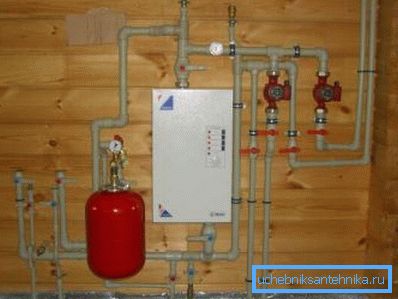
Advantages of LPG Heating
The use of such a climate control system has the following advantages:
- can be operated throughout the year, providing residents (using a double-circuit boiler) with hot water;
- ease of operation - gas cylinders do not take up much space, and a large tank can be placed underground, which saves space on the land plot;
- environmental friendliness - during combustion liquefied gas emits less harmful substances than diesel fuel or solid fuel;
- a properly designed and built system requires minimal maintenance and will reliably serve you for many years.
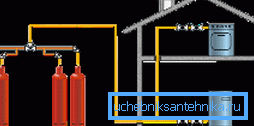
Heating system installation
First of all, it should be noted that designing a liquefied gas heating with your own hands is not only not recommended, but also prohibited. Due to the increased danger of operating gas equipment, the connection should be carried out only by qualified craftsmen who have the appropriate skills and permits issued by state regulatory agencies (see also the article Single-circuit gas heating boilers: economical heating with minimal investment).
The instructions below can be used only as reference information in order to monitor the actions of the hired specialist.
Used equipment
Autonomous heating of a country house with liquefied gas is constructed from the following elements:
- gas boiler equipped with a liquefied gas burner;
- gas cylinders or gasholders that store the fuel used;
- valves that turn the gas supply on and off to the installed equipment;
- the reducers reducing pressure of gas before its giving to consumers;
- gas pipelines connecting all parts of the heating system to each other.
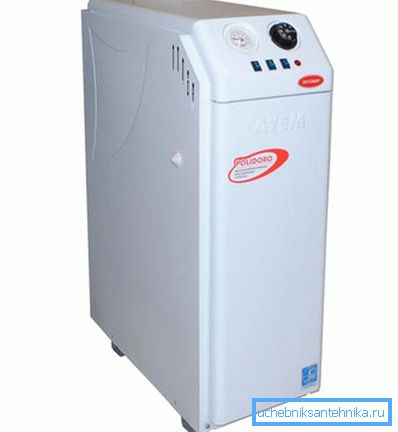
Almost any gas boiler produced by modern industry can act as a heater. It should, however, ensure that its design involves the use of liquefied gas, which is somewhat different from that supplied by the central gas supply networks.
Note! Most models of modern boilers have parts that make it possible to convert a burner from one type of fuel to another. Therefore, if a gas pipeline is ever conducted to your section, the existing heating system can be easily reconstructed for a new type of fuel.
In addition, pay attention to the following parameters of the purchased boiler:
- the presence of one or two circuits - in the latter case, you not only heat the house, but also provide yourself with hot water;
- floor or wall design - the second option does not require a separate room and can be installed directly in the kitchen;
- with an open or closed combustion chamber - closed - does not require equipment of the chimney and does not burn the air in the premises, therefore, it is more preferable.
When choosing a boiler, also pay attention to the gas pressure, which is necessary for its operation. The lower this parameter is, the better, since it will allow more complete use of gas from a cylinder.

Well, the last tip. Choose heaters with maximum efficiency. This will save you a lot of cash when you buy fuel, the price of which is quite high.
Tip! In addition to the boiler, heating the house with liquefied gas can be arranged using a gas convector. This option is suitable for heating a small country house, garage or other similar premises. The advantages include the absence of the need for wiring pipes and radiators.
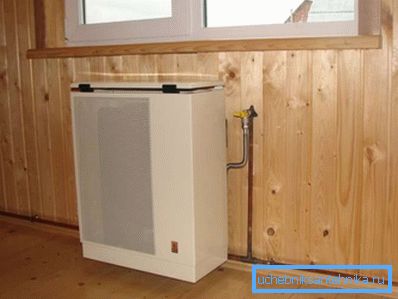
Features of the boiler connection
When designing liquefied gas heating of a private house, it is advisable to provide for the simultaneous connection of not one but several cylinders to the boiler (from 3 to 10). In this case, you will increase the time during which the system will work autonomously and will not require replacement of gas tanks.
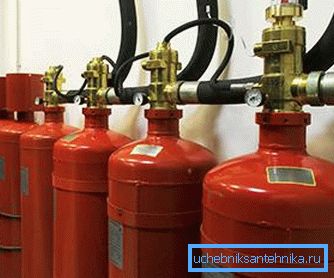
Let us consider in more detail the features of the connection:
- Tanks are joined to the installed equipment through a special gearbox, which allows you to spend up to 2 cubic meters. gas meters per hour. Devices that are used to connect cylinders with gas stoves, provide consumption of not more than 0.8 cu. meters per hour, because the heating system will not work.
- It is possible to connect several cylinders to the boiler using a single reducer or install these devices on each tank.. The latter method, although entailing an increased expenditure of funds, should be considered more expedient in view of the safety and ease of replacing empty tanks.

- Cylinders are not recommended to be stored outside. The fact is that when the ambient air temperature drops in the cold season, the gas pressure in the tank decreases, and this can lead to an emergency shutdown of the gas burner.
- It is forbidden to place cylinders in basements and basements, as well as rooms with pit or cellar. The fact is that propane, which is in the boilers, is heavier than air and, if it is leaking, can accumulate in such rooms. This, in turn, may cause an explosion or cause injury.
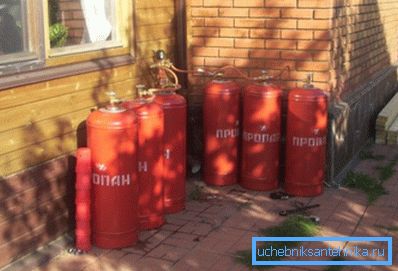
- For the same reason, it is not recommended to install cylinders in rooms adjacent to living rooms.. It is better if a separate room with a flat concrete floor is chosen for storage of cylinders.
Conclusion
Heating a country house with liquefied bottled gas is a rather expensive method of heating. It can be used in the event that in the future it is planned to connect the central gas pipeline. Otherwise, it is recommended to consider the possibility of using electricity or heaters on solid (liquid) fuel.
The video offered to your attention will tell about alternative methods of climate control in an individual dwelling in more detail.